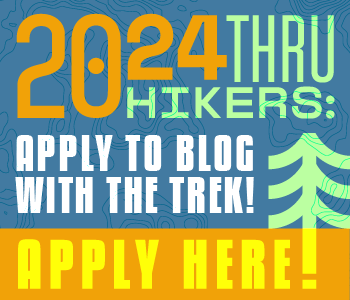My Biggest On-Trail Fear: Blisters
Let’s talk blisters. Often very small but ever so painful. Every time you take a step you feel a sharp pain, hundreds of little knives digging into your skin every single second. The presence of blisters can easily ruin a hike.
When I tell people I am going to attempt to thru-hike the Appalachian Trail, they often wonder if I’m scared of bears, getting lost, hitchhiking, and falling off cliffs. Truth be told, my biggest fear of hiking the Appalachian Trail is blisters.
I’m someone who is very prone to blisters. Perhaps it is because I spent years subjecting my feet to torture by dancing en pointe, but in any case I seem to blister extremely easily.
During my past two longer hikes—the East Coast Trail and the Long Trail—the hardest part to these hikes has been dealing with my blisters. I had to take a zero during the Long Trail because I had two extremely painful blisters on my heels that were opened. I’ll spare you and won’t include pictures, because they truly seem like something out of a horror movie and Halloween is still a couple of weeks away. I will say, though, that they were very deep, and I have been left with scars from them on my feet.
Blister Prevention Methods
I have tried so many different ways to prevent blisters while hiking. Although none of these methods have been the magic solution to avoiding blisters forever, these methods have definitely helped slow the process of blisters forming.
Body glide: Stopping every couple of hours to put body glide on my feet helps prevent friction.
Injinji socks: Toe socks help to prevent blisters in between your toes.
Liner socks: Wearing two pairs of socks can also help prevent the formation of blisters. An option is to use Injinji socks as your liners
Bigger shoe size: When you hike for numerous hours, your feet tend to swell up; therefore, starting your hike with a shoe size that is a bit bigger allows space to accommodate your growing feet.
Gaiters: Gaiters help keep dust and small rocks from the insides of your shoes, which could be creating the blisters in the first place.
Leukotape: Taping your toes with Leukotape can also be an effective way to prevent blisters. The only thing that is annoying about this method is that if you decide to go for a swim, you have to re-tape all your toes, which is rather time-consuming.
Healing Blisters
Moleskin: For the longest time I applied moleskin directly to my blister, but I learned that it is much better to cut out a square of moleskin and then cut a circle the size of your blister in this square. That way your blister won’t keep reopening because of friction.
My mom once told me that you should pop a blister if it’s bigger than a dime. Nonetheless, I have learned, thanks to my years of blister study and thanks to advice given to me by my friends who study nursing, that in most cases, you should not pop a blister. If you pop a blister, there is a much higher risk that your blister will become infected. If you do need to pop a blister, the best way to do it I think is with a needle and thread; you thread the needle, pop your blister, and keep the thread in your blister so it doesn’t close back up, but also so that the protective skin on your blister doesn’t rip.
I’m still on my blister-prevention journey, and who knows, perhaps during my thru-hike I will find the magic solution that works for me. I most likely will be confronted with my biggest fear while hiking the Appalachian Trail, but hopefully I will be able to minimize the damage done by blisters. (I would also prefer not to have any confrontations with bears during my hike.)
This website contains affiliate links, which means The Trek may receive a percentage of any product or service you purchase using the links in the articles or advertisements. The buyer pays the same price as they would otherwise, and your purchase helps to support The Trek's ongoing goal to serve you quality backpacking advice and information. Thanks for your support!
To learn more, please visit the About This Site page.


Comments 7
Prevention is the key. In my case moleskin is is the answer only if you apply when you first feel a hot spot. If applied after a blister forms you have to use something like second skin between the blister and the adhesive.
The best book about preventing or treating blister is “Fixing Your Feet” by John Vonhof. I used to get blisters all the time, even though I tried several different hiking boots, moleskin, changinging socks and using Luko tape. But no more after following the suggestions in this book which is also written for ultra-marathoners who run thousands of miles. Happy travels.
I drain the blister, cut away the dead skin, use BandAid Blister band aids (silver box) and tape it on with duck tape. Leave it on several days until the tape comes off in the shower. Then you’ll see it is beginning to heal. This works for me. DAT
Hiker’s wool- New Zealand
All natural wool and reusable!
Check out Engo Blister prevention patches. I just bought some on Amazon. I believe Darwin onthetrail mentioned them on YouTube, so I decided to try them out. I haven’t used them yet but I’ve heard good things!
Check out WrightSocks available from REI. They are built with layers like an integrated liner. I’ve never had a blister using them with trail runners. Buy a size larger shoe than you usually wear too.
I do have WrightSocks, and I plan to buy a larger shoe size 🙂 Thanks for your tips!